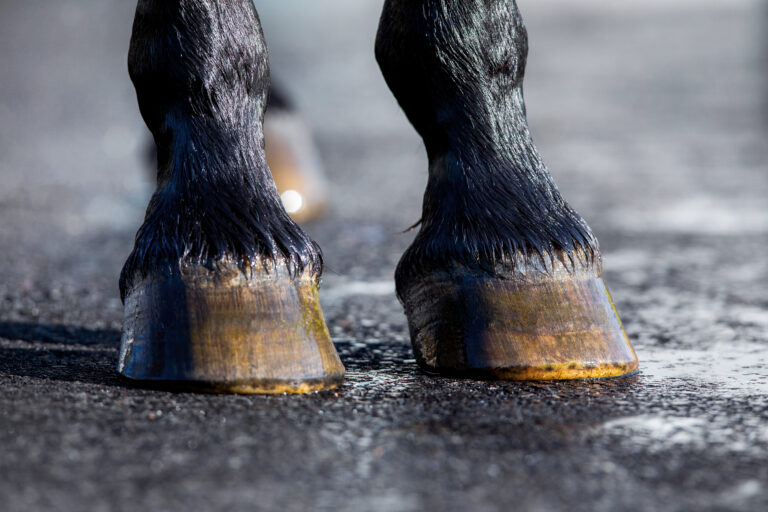As equine veterinarians, you know that when horses recognize care and dedication, they return it tenfold—your clients already believe their horse is special, sharing a bond that is as rare as a unicorn, but do they realize their horse has the ability to heal itself from lameness, soft tissue injury and more?
Traditionally, veterinarians have used steroids and hyaluronic acid to treat joints. While these are effective solutions for alleviating pain and inflammation, the sooner we get on top of health problems and determine their root causes, the better the possible outcomes. If there is inflammation, it’s there for a reason. So finding out why that is, and then managing it appropriately, is critical.
Educate Clients on Regenerative Medicine Treatment Devices
Regenerative medicine is an exciting field for helping to heal equine injuries by supporting the restoration of injured tissues and cartilage back to their original quality. The basic principles of regenerative medicine are to help the healing process by providing scaffolding, cells and biologic factors to promote normal tissue development versus scar tissue.
Regenerative medicine is a broad category, much larger than the stem-cell segment that most owners equate it with. Just like there are many different antibiotics for distinct situations, there are multiple regenerative medicine devices.
Here is what you need to know in order to educate owners on recovery options to harness their horse’s natural “power” in your veterinary practice.
What are Pro-Stride® APS, Restigen® PRP and CenTrate® Devices?

1) Pro-Stride APS Device (Autologous Protein Solution): In a simple stall-side procedure, the Pro-Stride APS Device takes 20 minutes to perform to help you draw a routine blood sample from the horse and centrifuge it using a two-step process. The result is a concentrated protein and cell solution containing anti-inflammatory cytokines (IL-1ra, sTNF-RI, sTNF-rII, A2M) and growth factors (VEGF, RDGF, IGF-1)1,2 that, when injected into the injured area, help alleviate pain and boost the horse’s healing process. It is most commonly used for degenerative joint disease, osteoarthritis and synovitis. In a study looking at client-owned horses that were evaluated for lameness, results found significant improvement in lameness grade up to a year later after just one Pro-Stride injection.3 No other regenerative medicine device has data out this far.

2) Restigen PRP Device (Platelet-Rich Plasma): The Restigen PRP device efficiently isolates platelets and white blood cells in the blood with one simple spin to create a highly concentrated autologous solution that is injected into the area of injury. By spinning the platelets, you’re concentrating key growth factors like TGF-β, PDGF, IGF and EGF, white blood cells and anti-inflammatory cytokines 9X in the solution.4,5,6 Restigen is mainly used to help jump-start the healing of soft tissue injuries and is one of the most extensively studied PRP devices.

3) CenTrate BMA Device (Bone Marrow Aspirate): The CenTrate BMA device isolates and concentrates MSCs and other regenerative cells to create a solution of powerful healing cells, which are injected into the site of injury.7,8 The device simplifies the procedure into a 15-minute process that is portable, safe for the horse and does not require further processing before using.
Chances are horse owners associate the phrase “regenerative medicine” exclusively with stem-cell treatments. Aspirating the bone marrow can be used to concentrate stem cells, white blood cells and platelets into a powerful concentration that can kick-start the healing process in complex injuries. After an injury, the body signals to recruit many cells for healing, and one of those is mesenchymal stem cells (MSC). You will collect a bone marrow aspirate from either the sternum or ileum using a specialized needle.
CenTrate is used for advanced arthritis, severe soft tissue injury or bone defects like OCD. Regenerative medicine devices helping to heal equine lameness and injuries are more expensive than traditional treatments, but they provide a regenerative healing path back to normal.
When Will Clients See Results?
The goal of using regenerative medicine devices is to restore the injured area to as near normal tissue composition as possible by isolating and concentrating the horse’s self-healing properties. This does not necessarily mean that regenerative medicine devices will work faster to heal the injured area compared to traditional approaches.
Typically with Pro-Stride, you will see significant positive results in 2 to 4 weeks, sometimes sooner.3 Restigen and CenTrate are used for soft tissue injuries and the size, location, and rehabilitation protocol will each influence the time it takes for the horse to recover.
These devices can improve the type of tissue and healing so that a horse can come back to its pre-injury level, however, they cannot change Mother Nature’s time frame to heal properly—so it is vital to give horses time to fully heal. Learn more about regenerative medicine devices at zoetisus.com/regenmeddevices.
References
- Muir R, Goemni R. Non-compartmental analysis. Ed: Bonate PL, Howard DR. Pharmacokinetics in drug development, Vol 1. 2004, 235-65.
- Linardi RL, Dodson ME, Moss KL, King WJ, Ortved KF. The Effect of Autologous Protein Solution on the Inflammatory Cascade in Stimulated Equine Chondrocytes. Frontiers in Veterinary Science. 2019;6. doi:10.3389/fvets.2019.00064
- Bertone AL, Ishihara A, Zekas LJ, et al. Evaluation of a single intra-articular injection of autologous protein solution for treatment of osteoarthritis in horses. American Journal of Veterinary Research. 2014;75(2):141-151. doi:10.2460/ajvr.75.2.141
- Woodell-May J. GPSTM III vs. Arthrex ACPTM output characterization. Biomet Biologics. 2021.
- Biomet verification protocols. Zoetis internal validation study. 2008.
- Bosch G, van Schie HT, de Groot MW, et al. Effects of platelet-rich plasma on the quality of repair of mechanically induced core lesions in equine superficial digital flexor tendons: A placebo-controlled experimental study. Journal of Orthopaedic Research. 2009. doi:10.1002/jor.20980
- King W, Tan M, Ponticello M, Woodell-May J. Anti-Inflammatory Properties of the Output of an Autologous Bone Marrow Concentrating Device. Orthopaedic Research Society 2016 Annual Meeting. March 4-8 2016.
- Ishihara A, Helbig HJ, Sanchez-Hodge RB, Wellman ML, Landrigan MD, Bertone AL. Performance of a gravitational marrow separator, multidirectional bone marrow aspiration needle, and repeated bone marrow collections on the production of concentrated bone marrow and separation of mesenchymal stem cells in horses. American Journal of Veterinary Research. 2013;74(6):854-863. doi:10.2460/ajvr.74.6.854
All trademarks are the property of Zoetis Services LLC or a related company or a licensor unless otherwise noted.
© 2022 Zoetis Services LLC. All rights reserved. PRS-00033
This article is brought to you by Zoetis.





